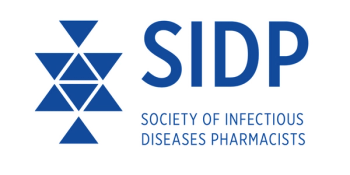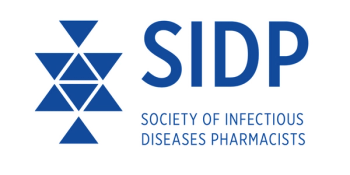
How pharmacists can use shared decision-making to improve antibiotic use.

How pharmacists can use shared decision-making to improve antibiotic use.

Introducing “Bench to Bedside With SIDP,” a new column covering everything from antimicrobial stewardship and pharmacokinetics/pharmacodynamics to mentorship, preceptorship, and more.

In part 2 of the interview, Ryan W. Stevens, PharmD, BCIDP, discusses the risks associated with convalescent plasma and highlights what clinicians should know.

In part 1 of our interview, Ryan W. Stevens, PharmD, BCIDP, provides an overview of how convalescent plasma has been used to treat infectious diseases including coronaviruses.

Jeannette Bouchard, PharmD, discusses how ID pharmacists are taking on new responsibilities and working collaboratively to respond to COVID-19.

Matthew Davis, PharmD, provides an overview on the agent remdesivir.

Thomas Dilworth, PharmD, provides a recap of ACEIs, ARBs, and NSAIDs in patients with COVID-19.

Krutika N. Mediwala, PharmD, BCPS, BCIDP, provides a recap of available information regarding Kaletra for the treatment of COVID-19.

COVID-19 does not present our first pandemic, nor will it be our last. What should we take note of?

Erin K. McCreary, PharmD, BCPS, BCIDP, discusses emerging literature on potential therapies COVID-19 and how the infectious disease community can work together during this pandemic.

Erin K. McCreary, PharmD, BCPS, BCIDP; and Jason M. Pogue, PharmD, BCPS, BCIDP, provide an update of published literature on experimental treatments for COVID-19 from the past week.

Just as influenza season started ramping up in the Northern Hemisphere, news hit the wire that Sanofi had secured over-the-counter rights for oseltamivir (Tamiflu).

Despite the initial abandonment of bacteriophages in most areas of the world, the era of antibiotic resistance has led to a resurgence of phage therapy in clinical practice.

The US Food and Drug Administration approved imipenem-cilastatin-relebactam to treat complicated intra-abdominal infections and complicated urinary tract infections in adults with limited treatment options.

When using ceftolozane/ tazobactam to treat patients with P aeruginosa respiratory tract infections, the use of extended or continuous antibiotic infusion and/or combination therapy with other active antibiotic agents should be considered, particularly if targeting higher MIC values.

Readmission rates for patients receiving OPAT are reported to be as high as 20%, mostly due to catheter-related problems, adverse drug reactions, or worsening of the primary infection.

This article evaluates the point in microbiological workup at which results of respiratory secretion and blood cultures could be interpreted as excluding MRSA and, thus, no longer warrant the empirical vancomycin therapy.

A recent study reported the benefit of vaginal microbiome transplantation for the treatment of recurrent bacterial vaginosis.

Novel modes of delivery are imperative to improve HIV suppression and prevent transmission.

Infectious diseases clinicians turn to Twitter as a tool for education and collaboration.

In 2017, a guideline update stripped metronidazole of its first-line therapy designation and crowned oral vancomycin as initial therapy for all C difficile infection cases.

This article highlights some key updates to the antimicrobial therapy recommendations in the updated community-acquired pneumonia guidelines.

By stopping unnecessary antibiotics before they start, clinicians can avoid unnecessary harm to the patient and the population.

Novel β-lactam/β-lactamase inhibitor combinations and cefiderocol may play a part in the treatment of infections caused by Stenotrophomonas maltophilia, Achromobacter xylosoxidans, and Burkholderia cepacia complex.

The high recurrence rates of Clostridioides difficile infection highlight the need for novel agents with unique mechanisms of action for treating the infection.

Updates include novel and revised breakpoints for azithromycin, polymyxins, daptomycin, and cefiderocol.

In the August Editor-in-Chief's Letter, Dr. Jason Gallagher discusses how we can improve outpatient antimicrobial stewardship.

The story of penicillin and cefazolin.

Optimal dosing of daptomycin is unknown, but study results suggest higher doses are required for successful clinical and microbiological outcomes.

Optimizing the relationship between infection prevention and antimicrobial stewardship.